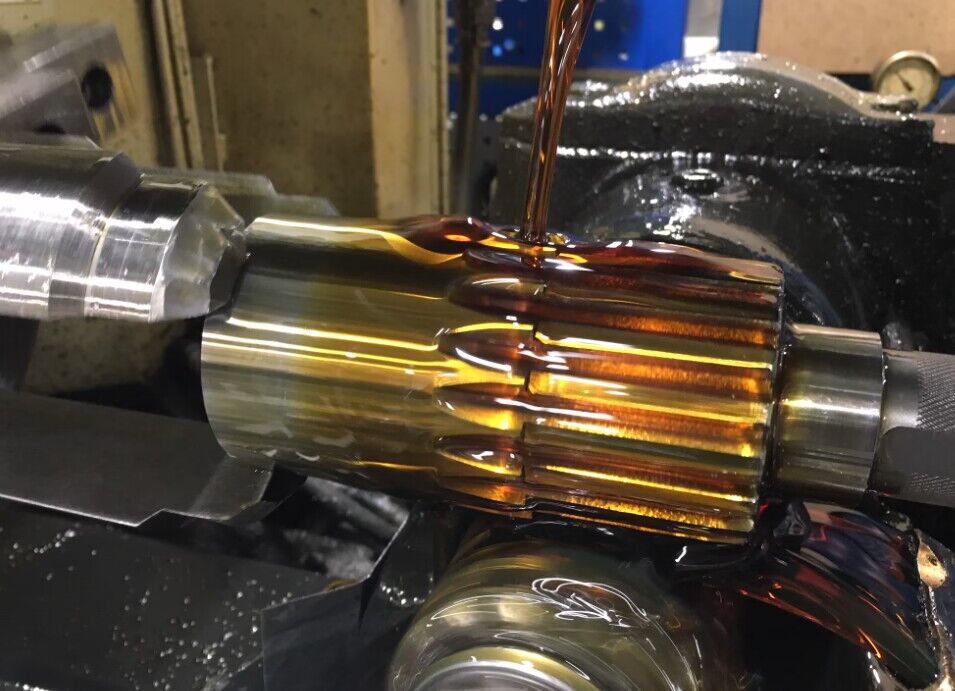Splined shafts play a crucial role in various mechanical systems, transmitting torque and ensuring precise motion in applications ranging from automotive transmissions to industrial machinery. This blog provides in-depth insights and tips for mastering the art of splined shaft machining, covering key considerations from material selection to machining techniques.

1.Material Selection
Understanding Material Properties:
Material selection is a foundational step in splined shaft machining, directly impacting the shaft’s performance and longevity. Understanding the specific application requirements is crucial. Considerations should include the anticipated torque loads, operational environment, and required material properties.
Common Materials for Splined Shafts:
Common materials for splined shafts include alloy steels such as 4140 and 4340, stainless steels, and titanium. Alloy steels offer excellent strength and durability, while stainless steels resist corrosion. Titanium is chosen for applications where a combination of high strength and low weight is critical.
Choosing the suitable material ensures the splined shaft can withstand the mechanical stresses and environmental conditions it will encounter during operation, contributing to the overall efficiency and reliability of the mechanical system.
2.Design Considerations
Spline Type and Profile:
The spline type and profile significantly influence the performance of the splined shaft. Involute splines are commonly used due to their uniform load distribution and efficiency in torque transmission. Straight-sided splines are also employed in specific applications, each offering unique advantages based on the intended use.
Tolerance and Fit:
Precision in spline dimensions is paramount. The selection of appropriate tolerances and fits is based on the application’s specific requirements. Striking a balance between ease of assembly and optimal load distribution ensures the splined shaft operates efficiently within the mechanical system.
Design considerations are fundamental to the functionality and reliability of the splined shaft, impacting factors like load distribution, stress concentration, and overall system performance.
3.Tooling Selection
Cutting Tools:
Selecting high-quality cutting tools is essential for achieving precision in splined shaft machining. Carbide end mills and hobs are commonly used for their durability and precision. The choice of tool geometry should align with the desired spline profile and material being machined.
Coatings:
Coatings such as TiN (Titanium Nitride) or TiAlN (Titanium Aluminum Nitride) can enhance tool life and reduce friction during machining. Coated tools are particularly beneficial for maintaining dimensional accuracy and surface finish over extended machining periods.
Investing in proper tooling is critical to achieving efficient and accurate splined shaft machining, impacting both productivity and the quality of the final product.
4.Machining Techniques
CNC Machining:
Utilizing Computer Numerical Control (CNC) machining offers unparalleled precision and repeatability in splined shaft production. CNC lathes and mills, equipped with live tooling, allow for efficient and accurate machining of complex geometries.
Broaching:
Broaching is a highly efficient method for internal spline machining. The broaching process involves a serrated tool progressively removing material, making it suitable for both internal and external splines.
Hobbing and Shaping:
Traditional methods like hobbing and shaping remain relevant for spline machining. Hobbing is suitable for internal and external splines and involves a rotating tool generating the spline geometry. Shaping, however, utilizes a reciprocating tool to achieve the desired profile.
Selecting the appropriate machining technique depends on factors like production volume, required tolerances, and the complexity of the spline geometry.
5.Heat Treatment
Importance of Heat Treatment:
Typical processes include quenching and tempering, which contribute to achieving the desired hardness, toughness, and overall material strength.
Minimizing Distortion:
Proper heat treatment practices are essential to minimize distortion during the process. Using well-designed fixtures that support the shaft adequately can reduce the likelihood of warping or uneven heat treatment, ensuring dimensional stability.
Adequate heat treatment not only improves the performance of the splined shaft but also contributes to its longevity and reliability under varying operational conditions.
6.Quality Control
In-Process Inspection:
Implementing in-process inspections is a proactive measure to identify and rectify dimensional deviations early in the machining process.
Final Inspection:
A comprehensive final inspection is crucial to guarantee the quality of the finished splined shaft. This includes checking spline profile dimensions, surface finish evaluation, and hardness testing.
7.Surface Finish and Deburring
Achieving Smooth Surfaces:
Utilizing appropriate cutting speeds and feeds helps achieve the desired surface quality, contributing to the overall efficiency of the mechanical system.
Deburring:
Thorough deburring is essential to eliminate the machined splines’ sharp edges and stress concentration points. This step enhances the overall fatigue resistance of the shaft, reducing the risk of premature failure.
Attention to surface finish and deburring adds a finishing touch to the splined shaft, impacting both functional performance and aesthetic considerations.
8.Environmental Considerations
Corrosion Resistance:
Consider the environmental conditions in which the splined shaft will operate. If exposure to corrosive elements is anticipated, selecting materials with enhanced corrosion resistance or implementing protective coatings becomes crucial.
Lubrication:
Factor in the lubrication requirements for the splined shaft. Proper Lubrication is essential to reduce friction, wear, and the risk of surface pitting, thereby extending the operational life of the shaft.
Considering environmental factors ensures that the splined shaft performs optimally under diverse conditions.
9.Cost Optimization
Batch Production:
Optimizing costs in splined shaft manufacturing often involves batch production. CNC machining allows for efficient production runs, minimizing setup times for subsequent batches. This approach is particularly beneficial when producing a high volume of identical or similar splined shafts.
Tool Life Management:
Effectively managing tool life is integral to cost optimization. Regular inspections, reconditioning, and timely tool replacement maximize the lifespan of cutting tools and minimize tool-related costs over time.
Strategies for cost optimization ensure that the manufacturing process remains economically viable without compromising on quality.
Conclusion
In conclusion, mastering splined shaft machining requires a holistic approach, encompassing material selection, design considerations, precise machining techniques, quality control, and environmental considerations. By adhering to these industry tips, manufacturers can produce splined shafts that meet and exceed industry standards for precision, durability, and efficiency. Continuous innovation and a commitment to adopting advanced technologies will further elevate the capabilities of splined shaft machining in meeting the evolving needs of modern industries.
